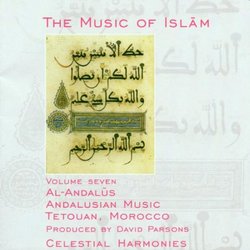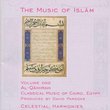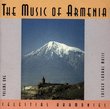| All Artists: Various Artists Title: Music of Islam 7: Al-Andalus Andalusian Members Wishing: 1 Total Copies: 0 Label: Celestial Harmonies Release Date: 4/14/1998 Genres: International Music, Pop Styles: Europe, Continental Europe, Middle East, Islamic Number of Discs: 1 SwapaCD Credits: 1 UPC: 013711314724 |
Search - Various Artists :: Music of Islam 7: Al-Andalus Andalusian
 | Various Artists Music of Islam 7: Al-Andalus Andalusian Genres: International Music, Pop
Ten years in the making, The Music of Islam series recorded in Egypt, Morocco, Tunisia, Turkey, Yemen, Pakistan, Indonesia, Iran and Qatar represents the most comprehensive sound documentation available to Westerners to... more » |
Larger Image |
CD Details
Synopsis
Album Description
Ten years in the making, The Music of Islam series recorded in Egypt, Morocco, Tunisia, Turkey, Yemen, Pakistan, Indonesia, Iran and Qatar represents the most comprehensive sound documentation available to Westerners today, of a world religion dating back to 1/622. Although governed by strict rules for fourteen centuries, contact with other cultures has radically affected Islamic music throughout history. As the world enters the XV/21st century the timing of this collection serves an even larger purpose, documenting the traditions that have survived and will continue to survive for centuries to come. Today, one fifth of the world's population, one billion people, are Muslims, occupying a large territory stretching from the Atlantic shore of north and west Africa, through west, central, and south Asia to island southeast Asia, and attracting an increasing following in India, western Europe, north America, east Asia, and southern Africa. This is a global presence which cannot be ignored.North Africa became the stronghold of Arab-Andalusian music after the fall of Granada in 897/1492, yet the existence of the nubah (plural nubat, literally rotation or succession) system in Morocco can be traced back earlier, to at least the XI/12th century. Much of the repertoire has been lost over the years, and different areas preserve different nubat. In Morocco today, there are at least two distinct styles of Arab-Andalusian music, al-Ala, which is the most prevalent one across the country, and Gharnati, specific to Oujda in eastern Morocco and to Tlemcen in Algeria. These traditions are considered to be Morocco's classical musical heritage.The repertoire of the al-Ala today is highlighted in this volume. It consists of eleven nubat which were standardized in the late XII/18th century. A nubah is divided into five sections, each corresponding to a particular mizan - rhythmic pattern. Within each of these rhythmic phases, there is a slow and a fast version of each mizan. A nubah is actually never performed in its entirety, for this could take over six hours. Each Moroccan nubah contains between 95 and 153 songs and instrumental pieces. The layout of the nubah functions more as a matrix of possible performance choices than as a plan that must be adhered to. A typical nubah performance will consist of several pieces from a few different rhythmic phases.

 Track Listings (8) - Disc #1
Track Listings (8) - Disc #1

